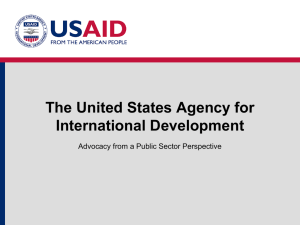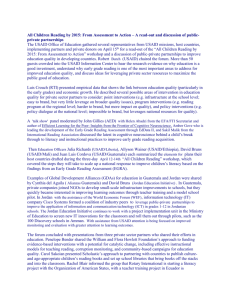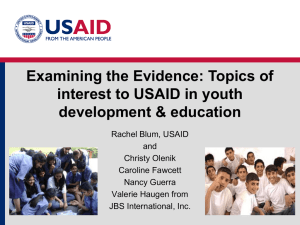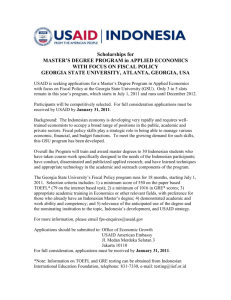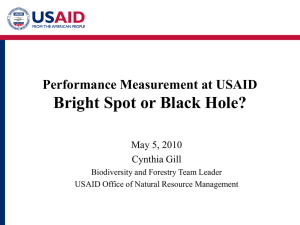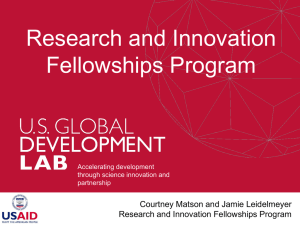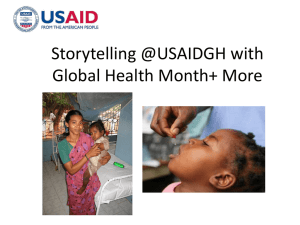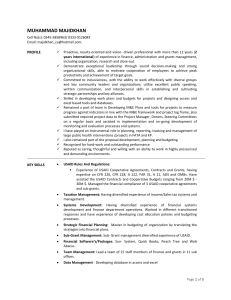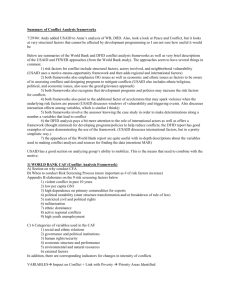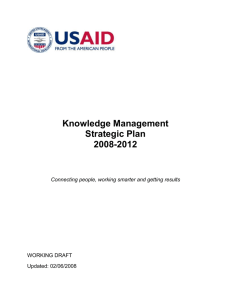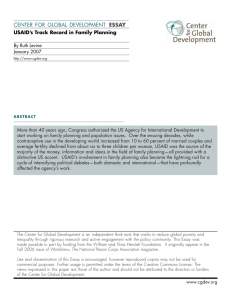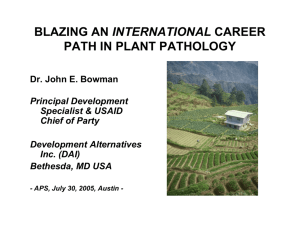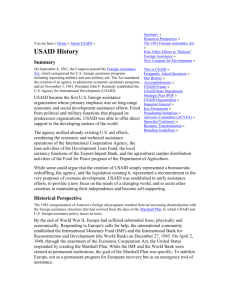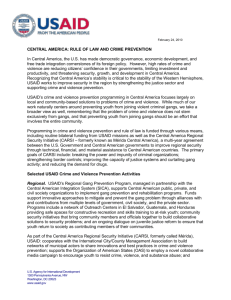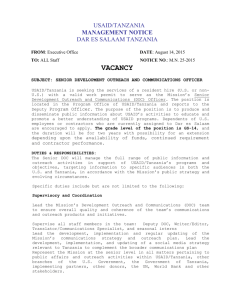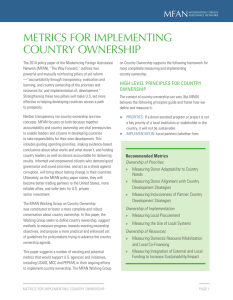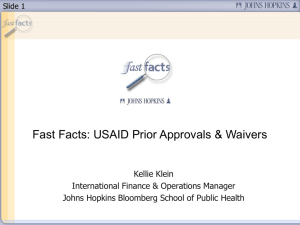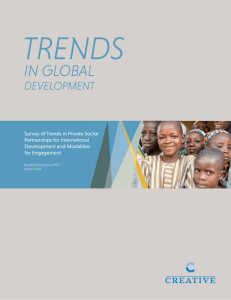Religion Linked to Development - International Center for Religion
advertisement
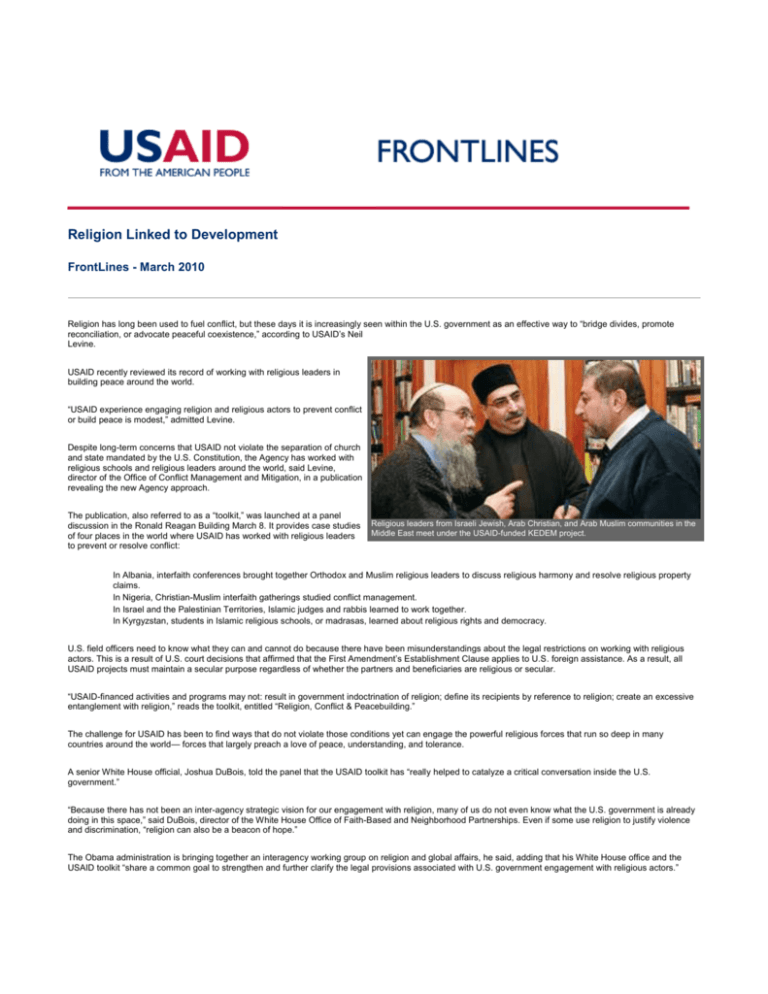
Religion Linked to Development FrontLines - March 2010 Religion has long been used to fuel conflict, but these days it is increasingly seen within the U.S. government as an effective way to “bridge divides, promote reconciliation, or advocate peaceful coexistence,” according to USAID’s Neil Levine. USAID recently reviewed its record of working with religious leaders in building peace around the world. “USAID experience engaging religion and religious actors to prevent conflict or build peace is modest,” admitted Levine. Despite long-term concerns that USAID not violate the separation of church and state mandated by the U.S. Constitution, the Agency has worked with religious schools and religious leaders around the world, said Levine, director of the Office of Conflict Management and Mitigation, in a publication revealing the new Agency approach. The publication, also referred to as a “toolkit,” was launched at a panel discussion in the Ronald Reagan Building March 8. It provides case studies of four places in the world where USAID has worked with religious leaders to prevent or resolve conflict: Religious leaders from Israeli Jewish, Arab Christian, and Arab Muslim communities in the Middle East meet under the USAID-funded KEDEM project. In Albania, interfaith conferences brought together Orthodox and Muslim religious leaders to discuss religious harmony and resolve religious property claims. In Nigeria, Christian-Muslim interfaith gatherings studied conflict management. In Israel and the Palestinian Territories, Islamic judges and rabbis learned to work together. In Kyrgyzstan, students in Islamic religious schools, or madrasas, learned about religious rights and democracy. U.S. field officers need to know what they can and cannot do because there have been misunderstandings about the legal restrictions on working with religious actors. This is a result of U.S. court decisions that affirmed that the First Amendment’s Establishment Clause applies to U.S. foreign assistance. As a result, all USAID projects must maintain a secular purpose regardless of whether the partners and beneficiaries are religious or secular. “USAID-financed activities and programs may not: result in government indoctrination of religion; define its recipients by reference to religion; create an excessive entanglement with religion,” reads the toolkit, entitled “Religion, Conflict & Peacebuilding.” The challenge for USAID has been to find ways that do not violate those conditions yet can engage the powerful religious forces that run so deep in many countries around the world— forces that largely preach a love of peace, understanding, and tolerance. A senior White House official, Joshua DuBois, told the panel that the USAID toolkit has “really helped to catalyze a critical conversation inside the U.S. government.” “Because there has not been an inter-agency strategic vision for our engagement with religion, many of us do not even know what the U.S. government is already doing in this space,” said DuBois, director of the White House Office of Faith-Based and Neighborhood Partnerships. Even if some use religion to justify violence and discrimination, “religion can also be a beacon of hope.” The Obama administration is bringing together an interagency working group on religion and global affairs, he said, adding that his White House office and the USAID toolkit “share a common goal to strengthen and further clarify the legal provisions associated with U.S. government engagement with religious actors.” A U.S. NGO has already been at work teaching 2,500 leaders of religious schools in Pakistan to bring fresh attention to the messages of peace and tolerance found in the Koran, said Doug Johnston, founder and head of the International Center for Religion and Diplomacy (ICRD). Johnston told the panel he met with extremely militant madrasa leaders and found them open to discussion after he recalled the history of Islamic learning and tolerance in the Middle Ages. “We inspired them with their own heritage of tolerance,” said Johnston, a former nuclear submarine captain and author of Religion: the Missing Dimension of Statecraft. ICRD, which currently has no U.S. government funding, has trained leaders of 1,500 madrasas, focusing on the most radical ones. The training aims to improve teaching skills so that madrasa students learn to improve critical thinking skills and eventually can attend Pakistani universities. “A recent OECD [Organization for Economic Cooperation and Development] study pointed to the danger of allowing pockets of exclusion in fragile states. We simply can’t afford to have religious actors excluded when we are working in these environments,” said Levine. Another panelist, Marc Gopin, director of the Center on Religion, Diplomacy and Conflict Resolution at George Mason University, said that it’s a common mistake in the West to believe that religion does not matter and that material factors alone explain conflict. Gopin, who spent more than five years living in Syria, told of his success bringing together moderate and tolerant Muslim religious leaders around discussions that bridged faiths. He himself is a rabbi. He said that U.S. government support for some activities within religious institutions abroad could promote peace and tolerance. “We [give funds to] Catholic Relief Services and World Vision, so why not do hot lunches in madrasas in Pakistan?” he said, mentioning two prominent NGOs that carry out USAID programs overseas even though they were founded by religious institutions. The USAID publication “Religion, Conflict & Peacebuilding” is available at www.usaid.gov/our_work/cross-cutting_programs/ conflict/publications/docs/Religion_Conflict_and_Peacebuilding_Toolkit.pdf (pdf, 4.9mb) ★— B.B.




